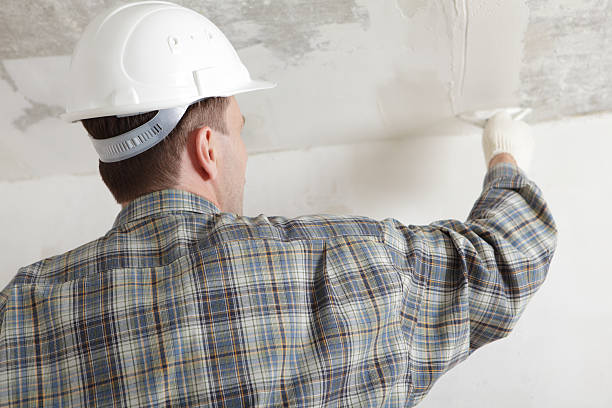Ceiling plastering

Ceiling plastering, a craft that has stood the test of time, involves applying a layer of plaster onto ceilings to achieve both functional and aesthetic benefits. From traditional methods to modern trends, plastering techniques have evolved, offering a wide range of options for homeowners and businesses.
Definition of Ceiling Plastering
Ceiling plastering is the art of applying a smooth, durable layer of plaster onto ceilings, enhancing their appearance and providing additional insulation. It’s a meticulous process that requires skill and precision, often transforming dull spaces into elegant ones.
Importance of Proper Ceiling Plastering
Beyond aesthetics, ceiling plastering serves practical purposes. It adds an extra layer of protection to the ceiling, preventing issues like cracks and water damage. A well-plastered ceiling also contributes to the overall insulation of a building.
Traditional Plastering
Traditional plastering involves the use of a mix of lime, sand, and water. This time-tested method creates a classic, textured finish that adds character to any room.
Drywall Plastering
Drywall plastering, also known as joint compound or mud, is a popular modern option. It’s applied over drywall sheets, providing a smooth and seamless surface.
Venetian Plastering
Venetian plastering, originating from Italy, involves applying layers of plaster mixed with marble dust. This technique creates a luxurious, marble-like finish.
Aesthetic Appeal
One of the primary reasons people opt for ceiling plastering is the aesthetic enhancement it brings to a space. Whether it’s the textured look of traditional plaster or the sleek finish of Venetian plaster, the options are vast.
Durability
Well-executed plastering adds durability to ceilings, making them resistant to cracks and other damage. This longevity makes it a cost-effective choice in the long run.
Insulation Properties
Ceiling plastering contributes to the insulation of a building, helping regulate indoor temperatures. This can lead to energy savings and increased comfort.
Necessary Tools and Materials
Before starting a plastering project, gather essential tools and materials, including a plaster mix, trowels, sandpaper, and a drop cloth.
Surface Preparation
Prepare the ceiling surface by cleaning and repairing any existing damage. Apply a primer to ensure proper adhesion of the plaster.
Application of Plaster
Follow the manufacturer’s instructions for mixing the plaster. Apply it evenly on the ceiling, working in small sections to achieve a uniform finish.
Sanding and Finishing
Once the plaster is dry, sand the surface to achieve a smooth texture. Finish the process by applying a topcoat or paint for the desired look.
Cracks and Patches
Cracks may appear over time due to settling or temperature changes. Regular inspections and prompt repairs can prevent these issues from escalating.
Moisture Problems
Moisture can damage plastered ceilings. Identify and fix the source of moisture promptly to avoid extensive damage.
Uneven Texture
Inexperienced DIYers may face challenges in achieving a uniform texture. Proper application techniques and patience are crucial.
Factors to Consider
When hiring a professional plasterer, consider factors like experience, portfolio, and customer reviews. A skilled plasterer can ensure a flawless finish.
Cost Analysis
Get multiple quotes and analyze the cost involved. While quality is essential, finding a balance between price and service is key.
Checking Credentials
Ensure that the plasterer is licensed and insured. This protects you from potential liabilities and guarantees the quality of your work.
Cleaning Techniques
Regularly dust and clean plastered ceilings using a soft brush or a vacuum cleaner with a brush attachment. Avoid harsh chemicals that may damage the finish.
Repairs and Touch-ups
Address any damages promptly to prevent them from worsening. Small cracks or chips can often be repaired with a bit of plaster and touch-up paint.
Regular Inspections
Periodically inspect your plastered ceilings for any signs of damage or wear. Early detection allows for timely repairs and preserves the integrity of the plaster.
Modern Designs and Finishes
Explore contemporary plastering designs, such as geometric patterns or textured finishes, to add a modern touch to your space.
Sustainable Plastering Options
Consider eco-friendly plastering materials and techniques that minimize environmental impact while providing a stylish finish.
Integration with Smart Home Technologies
Explore ways to integrate plastered ceilings with smart home technologies, such as hidden lighting or built-in speakers.
Residential Transformations
Discover how ceiling plastering transformed ordinary homes into stunning showcases of craftsmanship.
Commercial Spaces
Explore examples of how businesses utilized ceiling plastering to create inviting and sophisticated atmospheres.







